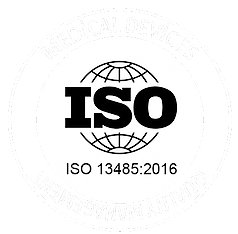
What breakthroughs are made of
One of the greatest achievements in medical ingenuity in recent memory is the rapid development of the COVID-19 vaccine. Pivotal in combating the pandemic, the vaccine was designed using pre-existing mRNA technology, which was originally developed for research purposes.
There is a lesson here for medical device entrepreneurs.
Bringing a medical device from concept to market is a complex journey that requires a delicate balance of innovation, risk management, and efficient resource management. This becomes even more intricate when dealing with implantable devices, where the stakes are exceptionally high due to the long development cycles and the direct impact on patient health. For neuromodulation devices, the challenge may be further compounded by the limited ability to conduct animal testing. The result is a long device development cycle with high risk of failure.
A 3-tier approach to innovation
Device startups often get caught up in the notion that their challenge is unique enough to warrant inventing every aspect of the product from scratch. They grapple with the challenge of distinguishing their product's unique features while navigating the multifaceted layers of medical device development.
The key to success lies in a nuanced understanding of the different technological components that make up the product architecture and their associated risks. By categorizing these elements into three distinct tiers, startups can focus their innovation efforts where it counts, while utilizing existing assets and expertise to mitigate risks and streamline their path to market.
Reusing existing technologies and know-how doesn’t take away from the uniqueness of your device. It just allows you to focus on it.
Tier 1: Off-the-shelf components
The first level of technology in any medical device development encompasses common, easily sourced components. Where possible, utilizing these components offers several advantages in cost-effectiveness, speed to market, and reduced risk.
“The re-architecture of the software imaging processing and analysis algorithms has produced immediate real-time analytics at 15 frames per second, and using off-the-shelf computational hardware kept the product cost competitive.” - Dr. Bruce Ferguson, Founder and Chief Medical Officer, Perfusio
The reality is that off-the-shelf components are rarely suitable for implantable devices beyond the proof of concept stage. Depending on the specific market requirements for an implant, it may be possible to reduce development cost and time by using off-the-shelf circuit board components to minimize the need for ASIC development for a first-generation device. Beyond this, there may also be some available implantable components like batteries or hermetic feedthroughs that will be suitable for getting a device to market for the first time.
The key when it comes to off-the-shelf components is to quickly understand whether any can be suitable for the device beyond the proof of concept stage.
“With Nocturnal’s help, we went from a rough concept made of off-the-shelf components to a fully integrated design that can be controlled using a smartphone in four months.” – Alex Cooper, CEO, Stealth Medical Device Company
And in the rare cases when off-the-shelf components are suitable, efficiently sourcing these components while ensuring they meet the required quality and regulatory requirements can yield substantial benefits for a medical device startup.
Tier 2: Transferable implantable device technology and know-how
The second tier involves components that require specific medical and implantable device expertise but are not unique to your specific application. For instance, aspects such as power management, biocompatibility, and miniaturization are common challenges in both cardiac and neuromodulation devices.
This means that certain elements of your medical device, while complex in nature, may benefit from the knowledge and experience accumulated in the design of other implantable devices. These elements may include:
- Ultra-low power firmware design
- Ultra-low-power hardware blocks for signal acquisition and power management
- High density interconnect (HDI) PCB substrate architectures
These building blocks require specialized features and cannot be sourced off-the-shelf. Yet they rely on technologies that are often already utilized, tested, and proven in other implanted devices.
Understanding where existing technologies and expertise can be leveraged and repurposed in your device can significantly reduce the cost, time, and risk associated with your product development.
There is a significant body of knowledge from other implantable devices that can be applied to neuromodulation devices.
Tier 3: Your unique technology (The “Secret Sauce”)
While neuromodulation devices are used in a wide range of clinical therapies, the foundational functional needs are largely similar across different types of neuromodulation devices. They typically relate to the ability to monitor and stimulate different areas and nerve systems as well as the ability to operate the device in a constrained placement.
The real differences can be found in one or more of the these areas:
- Implant location within the body
- The specific areas targeted for stimulation;
- The unique pulse shapes used;
- What data is collected; and
- How the data is used to adjust the therapy.
This is where the true innovation of your device lies. It requires a deep understanding of the specific physiology your device targets and the unique features of the therapy it delivers. This is where you want to focus the time and attention of your subject matter experts, while leveraging other resources to address areas that are not necessarily proprietary and unique to your device.
Balancing value creation through risk analysis
The ability to strategically navigate the layers of product innovation and their associated risk is critical to the success of product development in complex areas such as implantable medical devices.
Embracing a tiered approach to innovation empowers neuromodulation device startups to effectively allocate their resources, leveraging existing solutions where possible while applying groundbreaking innovation where it matters most.
Reusing proven knowledge and technologies is not just a shortcut. It is also a safer path to device commercialization.
Using this approach can deliver significant benefits:
- Shorter time to market: Repurpose established designs and technologies in areas such as power management, signal acquisition, and device miniaturization, adapting them to the needs of neuromodulation.
- Enhanced design: Apply insights from other implantable device engineering to optimize the design and functionality of your neuromodulation device.
- Reduced risk: Repurpose proven technologies and know-how from other implantable devices to reduce technology and operational risk.
- Greater predictability: Consider fixed priced projects for the development of proven components and technologies that can be repurposed for your device.
- Resources and budget efficiency: Utilize outside expertise to free up your most valuable resources to focus where they can make the greatest impact.
Not sure how to apply this 3-tier approach to your device development project?
Contact us to schedule a consultation.
MOST READ POSTS
Insights from a decade of milestone-based projects
Transforming biosignals into clinical insights
Why investors say No to medical device startups


